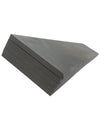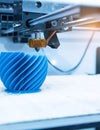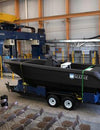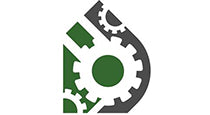No products in the cart.

Introduction
In recent years, 3D printing has emerged as a groundbreaking technology, revolutionizing various industries and opening up new possibilities across the board. With its ability to transform digital designs into tangible objects, 3D printing has become an invaluable tool with a wide range of applications. In this article, we will delve into the world of 3D printing and explore three major sectors where this technology is making a significant impact.
Medical Field
One of the most promising and life-changing applications of 3D printing is in the field of medicine. From prosthetics to organ transplantation, this technology holds immense potential to improve patient care and outcomes. In the realm of prosthetics, 3D printing enables the creation of customized and affordable prosthetic limbs, offering enhanced mobility and comfort to those in need.
Moreover, 3D printing plays a vital role in surgical planning and training. Surgeons can now create patient-specific 3D models of organs or body parts, allowing them to visualize complex procedures and develop precise surgical plans. This technology also serves as a valuable tool for medical education and training, enabling students and professionals to gain hands-on experience in a risk-free environment.
Manufacturing and Prototyping
3D printing has disrupted traditional manufacturing processes by introducing faster, more cost-effective, and highly customizable options. With this technology, complex designs can be transformed into physical objects with relative ease, eliminating the need for extensive tooling and reducing time-to-market.
Prototyping is one area where 3D printing has truly revolutionized the industry. The ability to quickly create functional prototypes enables designers and engineers to iterate and refine their designs rapidly, reducing development cycles and costs. This empowers businesses to bring products to market faster and stay ahead of their competitors.
Architecture and Construction
The architectural and construction sectors have also embraced 3D printing, paving the way for innovative and sustainable building practices. This technology enables the creation of intricate architectural models, helping architects and clients visualize designs before construction begins.
On a larger scale, 3D printing can be used to construct entire buildings. This approach, known as additive construction, involves the layer-by-layer deposition of construction materials, resulting in faster and more cost-effective construction processes. Moreover, additive construction allows for intricate designs and the use of sustainable materials, promoting eco-friendly building practices.
Conclusion
As we have explored, the applications of 3D printing are vast and continue to expand across various industries. From healthcare to manufacturing and architecture, this technology offers unprecedented opportunities for customization, efficiency, and innovation. As 3D printing technology continues to advance, we can expect even more exciting applications and further transformation in the years to come. The future of 3D printing holds immense potential, promising to reshape our world in profound and unexpected ways.
In recent years, 3D printing has emerged as a groundbreaking technology, revolutionizing various industries and opening up new possibilities across the board. With its ability to transform digital designs into tangible objects, 3D printing has become an invaluable tool with a wide range of applications. In this article, we will delve into the world of 3D printing and explore three major sectors where this technology is making a significant impact.
Medical Field
One of the most promising and life-changing applications of 3D printing is in the field of medicine. From prosthetics to organ transplantation, this technology holds immense potential to improve patient care and outcomes. In the realm of prosthetics, 3D printing enables the creation of customized and affordable prosthetic limbs, offering enhanced mobility and comfort to those in need.
Moreover, 3D printing plays a vital role in surgical planning and training. Surgeons can now create patient-specific 3D models of organs or body parts, allowing them to visualize complex procedures and develop precise surgical plans. This technology also serves as a valuable tool for medical education and training, enabling students and professionals to gain hands-on experience in a risk-free environment.
Manufacturing and Prototyping
3D printing has disrupted traditional manufacturing processes by introducing faster, more cost-effective, and highly customizable options. With this technology, complex designs can be transformed into physical objects with relative ease, eliminating the need for extensive tooling and reducing time-to-market.
Prototyping is one area where 3D printing has truly revolutionized the industry. The ability to quickly create functional prototypes enables designers and engineers to iterate and refine their designs rapidly, reducing development cycles and costs. This empowers businesses to bring products to market faster and stay ahead of their competitors.
Architecture and Construction
The architectural and construction sectors have also embraced 3D printing, paving the way for innovative and sustainable building practices. This technology enables the creation of intricate architectural models, helping architects and clients visualize designs before construction begins.
On a larger scale, 3D printing can be used to construct entire buildings. This approach, known as additive construction, involves the layer-by-layer deposition of construction materials, resulting in faster and more cost-effective construction processes. Moreover, additive construction allows for intricate designs and the use of sustainable materials, promoting eco-friendly building practices.
Conclusion
As we have explored, the applications of 3D printing are vast and continue to expand across various industries. From healthcare to manufacturing and architecture, this technology offers unprecedented opportunities for customization, efficiency, and innovation. As 3D printing technology continues to advance, we can expect even more exciting applications and further transformation in the years to come. The future of 3D printing holds immense potential, promising to reshape our world in profound and unexpected ways.
Leave a comment

 (+44) 01782943435
(+44) 01782943435
 sales@mdspareparts.com
sales@mdspareparts.com





